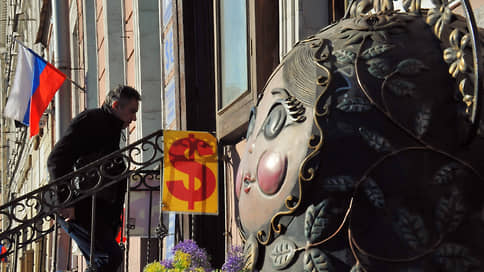Summer currency games
[ad_1]

The Bank of Russia published data on the volumes and participants in foreign exchange transactions in May-July 2022. At the peak of the strengthening of the ruble exchange rate, a significant contribution to its weakening was made by individuals who took advantage of the Central Bank’s expanded possibilities for transferring non-cash currency outside the Russian Federation. The game is not over yet: based on the data of the Bank of Russia, the average volume of sales of foreign exchange earnings by exporters has decreased, it is possible that corporate foreign exchange reserves accumulated outside the Russian Federation will return to the country in autumn and winter in different ways.
The Bank of Russia published the Bulletin “Overview of Financial Market Risks” for July 2022 (.pdf), in which he first described the situation on the foreign exchange market in April-July. Recallthat during this time there are no detailed balance of payments data: its publication became impossible after the FCS closed trade statistics, after which the Central Bank evaluates only aggregated figures. It was during this period that the maximum strengthening of the ruble against the dollar and the euro occurred, followed by weakening: in July, the ruble exchange rate against the dollar fell by 19.8%.
The Bank of Russia states, referring to its own survey of exporting companies, a possible change in the supply of foreign currency on the market. The share of the sale of foreign exchange earnings in the first quarter of 2022, the first two months of which there was no capital control, and in the last month the rate of sale of foreign currency under export contracts was introduced at the level of 80% with initially strict deadlines for mandatory transactions, de facto amounted to about 78%: 74% in January88% in february and 70% in March. The data for the second quarter looks different – in Aprilwhen a clear trend towards ruble appreciation was first discovered, the average share of sales under foreign exchange contracts was 61%, in Mayat the peak of “panic in reverse” and expectations of an uncontrolled strengthening of the exchange rate – 54%, in Junewhen the Central Bank lifted almost all restrictions on the repatriation of proceeds (de facto during the contract), – 64%.
By themselves, these figures provide only indirect grounds for assuming that the transition in July to a decrease in the level around which the exchange rate fluctuates (significantly stronger than before) was ensured precisely by a reduction in supply.
The reduction in the share of sales of foreign exchange earnings by exporters could not linearly repeat the dynamics of export volumes, and many factors could influence the monthly figures of corporate foreign exchange sales: the presence of ruble reserves, dividend decisions, strategies of corporate treasuries, and the dynamics of transaction risks.
For some exporters, primarily oil and gas exporters, high export prices made it unnecessary to sell such a volume of currency as before – if this assumption is correct, then the supply on the currency market has remained relatively stable since March.
Nevertheless, in the second quarter, the actual rate of sale of foreign exchange earnings by exporters apparently fell significantly below the “natural” level, which provides companies with sufficient ruble flows.
No less interesting is the situation on the buyer’s side. If technically they sold foreign currency, according to the Central Bank on the statistics of the Moscow Exchange, mainly large banks (executing orders of exporters), then the demand for foreign currency in July was mainly formed by medium-sized banks – they bought currencies for 319 billion rubles. The second category of buyers that contributed to the depreciation of the ruble are individuals: in June they made net purchases of foreign currency for 176 billion rubles, and in July – for 237 billion rubles. “Foreign currency was acquired by them mainly through banks that made transfers to foreign accounts,” the Central Bank’s report states dryly.
That is, with the highest probability, the scenario of July 2022 was as follows: after the Central Bank lifted restrictions on transfers of foreign exchange funds abroad, individuals not only continued to export part of their foreign exchange savings abroad (based on the volume of trading on the exchange, we should not talk about yuan and dram, but mainly about the “unfriendly” dollar and euro), but also bought additionally the sometimes fantastically cheaper dollar in order to send it to their foreign accounts.
According to the Central Bank, in July, the funds of individuals in foreign currency in the banking system of the Russian Federation decreased by $3 billion.
A significant part of this money, which also includes the earnings of citizens who were not afraid to “play the course” from May to June in a very frightening information background, migrated not to ruble deposits and not to the stock market, but safely left the Russian Federation.
The weakening of the average exchange rate of the ruble in June-July had a third component – the demand for foreign currency from “friendly” non-residents, primarily banks from the EAEU. Some of these purchases are “friendly” currencies, but mostly they were the same dollars and euros. Finally, cash transactions in the Russian Federation hardly played a role in exchange rate formation.
As imports recover, the Central Bank expects new growth in demand for the currency.
However, if the assumption that the repatriation of company revenues in the second quarter was insufficient for their real “ruble” needs is correct, then in autumn and winter this demand can be satisfied by “additional sales” of foreign currency by exporters, especially when foreign political pressure on the Russian economy increases. Here, the role of citizens in saving the ruble from weakening may be no less important than in summer, if the trend towards “devaluation” by transferring non-cash currency outside the Russian Federation continues.
[ad_2]
Source link






